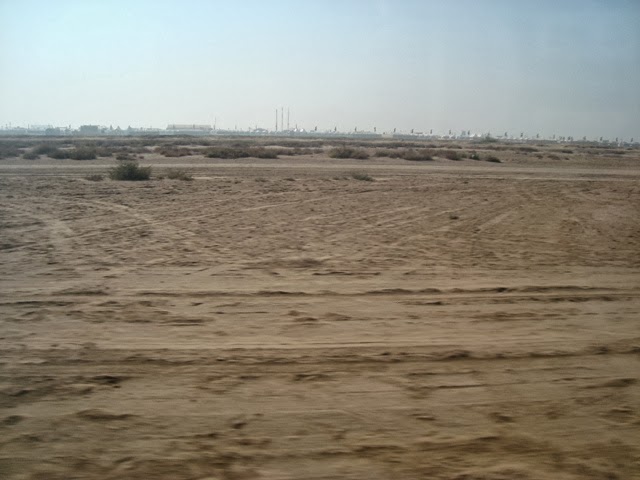Kutch - My Voyage of Discovery
Kutch is a land of
paradoxes.
One image of the Kutchi
community is very accurate though, whoever you speak to: they are an immensely
hardy, extremely savvy and yet very simple, kind and hospitable people, who
have traveled and settled across the world for the past several generations, in
the bargain creating a highly potent and efficient global business network.
Summer temperatures in
this district average 41°C and can touch 50°C, making it
one of the hottest regions in India. Winters, on the other hand, can see the
mercury dropping below 0°C!
When I thought of
Kutch, I imagined it as one vast, barren desert. But in reality, several
parts of this district are lush green beyond imagination, where plantations
from 10 acres to over 100 acres are common, producing world class dates, kesar
mangoes and pomegranates. This district is home to Banni, the largest
grasslands in Asia. It is also home to the White Desert and to the Kaalo Dungar (Black Hill).
 |
| The Rann of Kutch |
 |
| Banni Grasslands |
 |
| The White Desert |
 |
| Kaalo Dungar - the highest point in Kutch, |
Kutch, lying in the
northwest of Gujarat state, is the largest district in India: it is actually
larger than 9 entire states of India! With a 350-km long coastline to its
south, 300 kms of desert in the north and so much in between!
While there is hardship,
even poverty in several parts of Kutch, the district is also home to some of
the wealthiest people in the world; it’s just that they lead a simple lifestyle
and don’t show off their wealth.
Bollywood movies often
romanticize the people of this district as desert-dwelling nomadic
cattle-herders who are barely literate, but Kutch is also home to several
rich traditional crafts like weaving, embroidery, wood carving, metal work and
leather work, all of which are now famous the world over, thanks to the efforts
of organizations like Shrujan and several others.
This year, I celebrated my
18th birthday by taking off on a five-day trip to Kutch! I spent
the day packing everything I needed into my black backpack, and after dinner
that evening, we were off by the Bandra-Bhuj express!
Our base during the trip
was the guesthouse of Shrujan, an organization working with craftswomen across
Kutch. Each of the beautiful guest rooms were styled on the bhunga, the traditional houses in rural
Kutch. Bhungas are round mud huts
with thatched grass roofs. The combination of mud and cow dung used to build
the structure keeps the extreme climates of Kutch at bay: the interiors
remain surprisingly cool during the harsh summers and comfortably warm during
chilly winters – and having stayed in one for five days, I can vouch for this
technology! Unfortunately, most of the old
bhungas in many villages of Kutch were destroyed during the 2000
earthquake, and have since been replaced by ‘modern’ brick and concrete structures.
Historically, Kutch was
an arid district with limited indigenous food crops and hardly any vegetables
to boast of. Today, Kutchi cuisine makes use of everything from cauliflower
and capsicum to rice (a water intensive food crop) in their daily diet. But
these trends are very recent developments – only 35 odd years old. They are far
from the truly traditional food culture of this region. And that is what I went to explore on this
trip.
Kutch is home to many,
many communities – of craftsmen and pastoralists, Hindus and Muslims, Vankars, Rabaris, Jats. And I’ve
been told that food cultures vary from community to community across the
region.
Being a large district,
the distances are vast, and in just five days we covered over 700km! We were
lucky to travel in the relative comfort of air-conditioned four wheel drive
vehicles… many individuals still travel around on motorbikes in the scorching
heat, and before motor vehicles became popular in Kutch, people relied on
camels and camel carts, or simply walked the vast distances. Many nomadic maldhari communities still do!
I must acknowledge the
unstinting help I got from several people that made my first visit to Kutch a fruitful one: Pritibhabi (Shroff), a respected family-friend, advised us on
the various places to visit and people to meet. She also put us in touch with
Nihalbhai Rathod, a research resource from Shrujan and resident expert on the
history and cultures of Kutch; he took us around on the first three days.
Sunil Vaishnav, a childhood friend of my father’s who now oversees Kutch Crop Services (KCS, a large organization doing some path-breaking work to
promote agricultural technology in Kutch) gave us an overview about the development
of world-class date plantations in Kutch. Hirjibhai Rhathod, also from KCS,
showed us with everything we wanted to know about the advent of commercial
agriculture in the district. I don’t know how much I would have learned without
the guidance of these people, and the time they gave me.
All these people cautioned
me that five days would hardly be enough time to see all that Kutch has to
offer in the field of food, wild or cultivated, raw or cooked, traditional or
modern. If I wanted to see the true bounty of the food plants in Kutch,
March-April would be the season of bloom, and post-monsoon June and July would
be fruiting season. Everyone told me that I simply had to plan another trip.
And plan one I shall!
As for this trip, although
five days was barely enough to scratch the surface, I still learnt SO much, so
much I want to share, that there is no way it will all fit into one post! So
keep reading as I keep writing…



Comments
Post a Comment
Would love to hear your thoughts :)